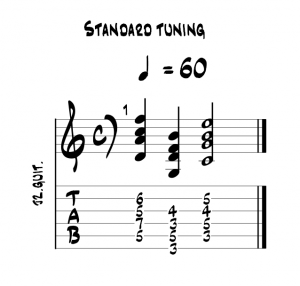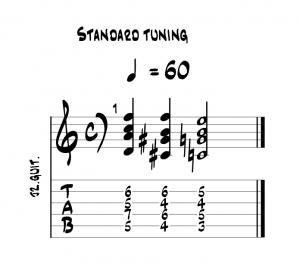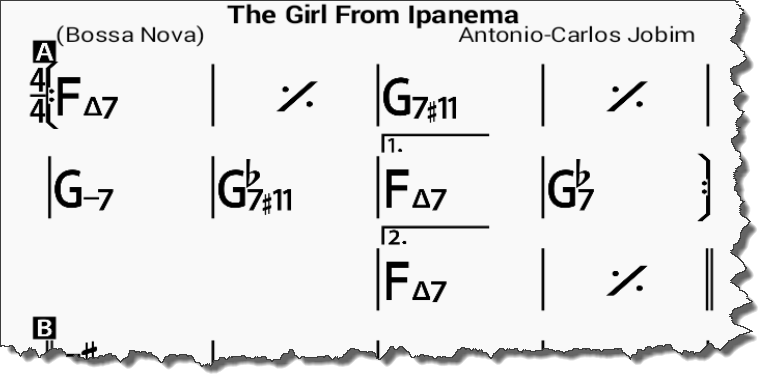To get us started let’s take a look at a classic ii-V-I in C major. As we know that gives us the following chords: Dm7 – G7 – Cmaj7.

If you take the G7 and move it up a tritone to C#7 you get something interesting. If we compare the chord tones of the 2 chords – G7 and C#7 – we find they share notes for the 3rd and 7th.
| Chord | R | 3 | 5 | b7 |
| G7 | G | B | D | F |
| C#7 | C# | F | G# | B |
You’ll note that the 3rd and flat 7th swap roles between the two chords. The fact that the two chords share these two notes means they sound harmonically similar. So, we can use this approach to create a chord substitutions by using a chord with its root a tritone above the chord being substituted. This method is called a tritone substitution.
A tritone substitution can offer an interesting side effect. As an example, if we take the original ii-V-I progression we started with and apply a tritone substitution for the G7 we would end up with Dm7 – C#7 – Cmaj7.

See how the root notes are moving down in semitones (D to C# to C)? If you recall from the post on Forward motion and harmonising minor ii-V-i we discussed strong root movement. Moving in semitones is second only in strength to movement in fourths (moving backwards through the cycle of 5ths). So, by using tritone substitution we can create a pleasing variation on strong root movement.
Note that this form of tritone substitution – substituting a dominant 7 for a dominant 7 – is the most common but not the only one. It is possible to change chord quality when substituting.
Here’s an example, The Girl From Ipanema.

The Girl from Ipanema is in the key of F major. So, Fmaj7 is the I chord, Gmin7 is the ii chord and the V chord should be C7. Note how the progression in measures 5 to 7 goes from Gmin7 (ii) to Fmaj7 (I) via a Gb7#11, not C7 as you’d expect from a ii-V-I. The Gb7#11 is a tritone substitution of C7.
